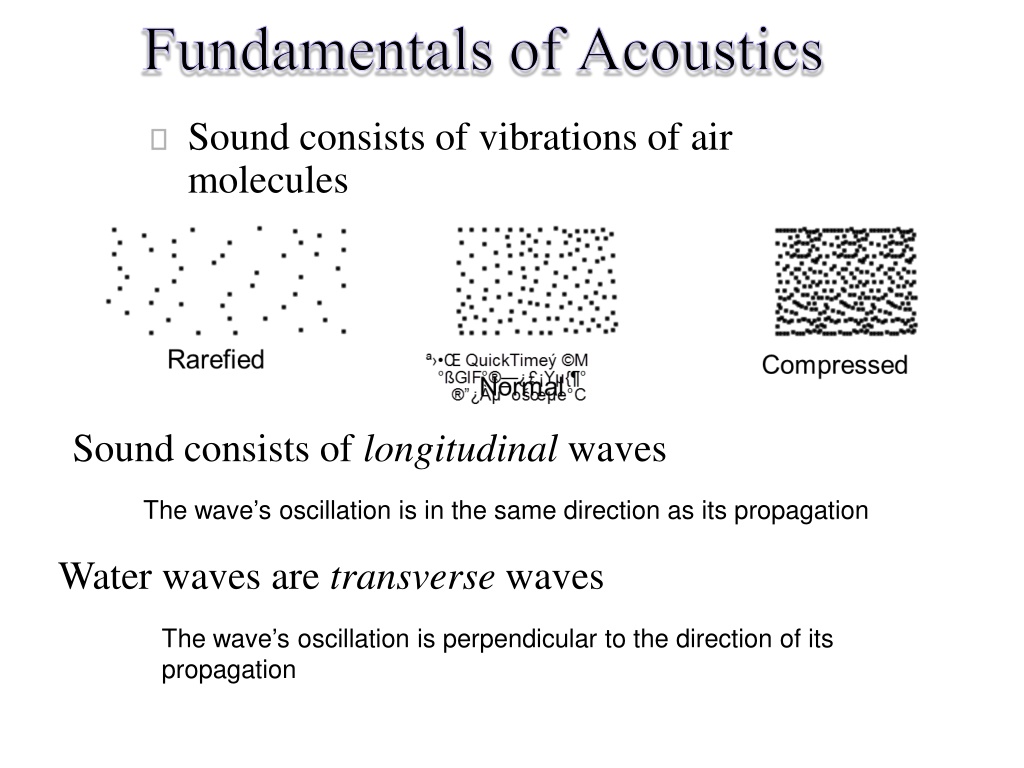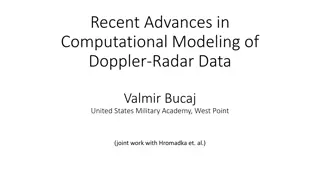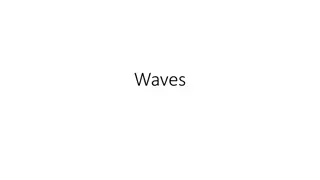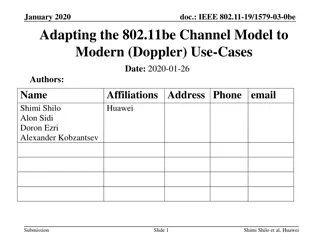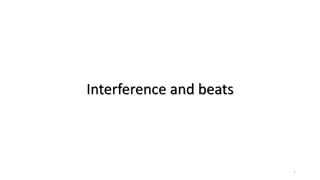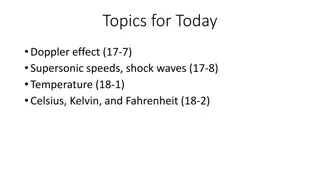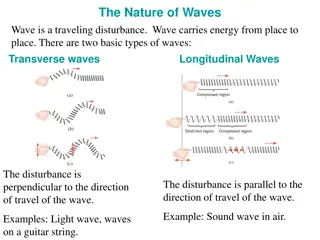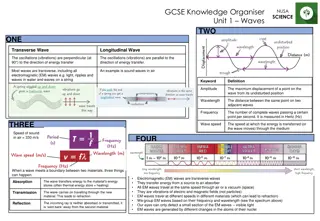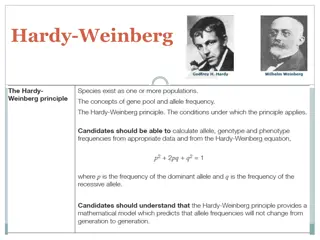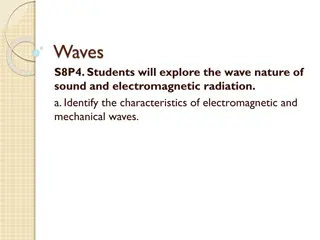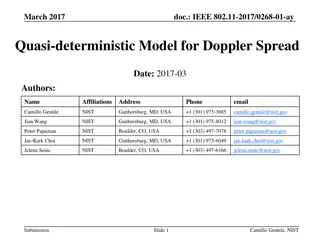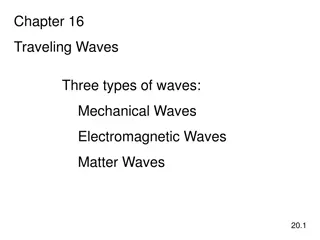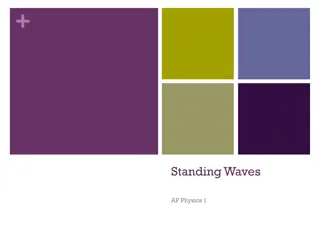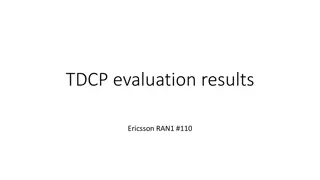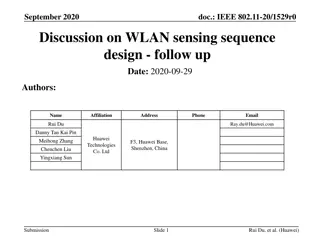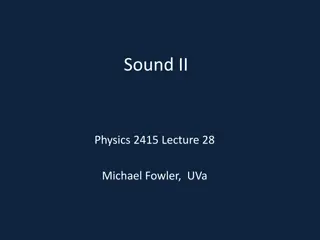Understanding Fundamentals of Acoustics: Waves, Frequencies, and the Doppler Effect
Sound involves vibrations of air molecules, with sound waves being longitudinal and water waves transverse. The transduction of sound into mechanical energy in the ear allows us to hear and perceive frequency/pitch. Exploring the Doppler Effect enhances our understanding of how motion affects sound perception.
Download Presentation

Please find below an Image/Link to download the presentation.
The content on the website is provided AS IS for your information and personal use only. It may not be sold, licensed, or shared on other websites without obtaining consent from the author. Download presentation by click this link. If you encounter any issues during the download, it is possible that the publisher has removed the file from their server.
E N D
Presentation Transcript
Fundamentals of Acoustics Sound consists of vibrations of air molecules Sound consists of longitudinal waves The wave s oscillation is in the same direction as its propagation Water waves are transverse waves The wave s oscillation is perpendicular to the direction of its propagation
When sound waves reach the eardrum, they are transduced into mechanical energy in the middle ear The mechanical motion is transduced into electrical current in the inner ear. The auditory nerves interpret the current as sound Sound waves are typically represented with molecular density as a function of time
Frequency/Pitch frequencies audible to humans 20 Hz = 50 ft. < 20,000 Hz (20 kHz) < = 0.05 ft. Sound wavelengths are significantly larger than light wavelengths
Last Lecture -Sound Speed of sound in fluid B v = B Y (for solid, replace ) I =P Intensity A I =10 log10 Io Intensity Level - dB I0=10 12W/m2 I = I010 /10 P 4 r2 I = Spherical Waves
Doppler Effect: Source in Motion ' = vsT v = vs ( f ' =v ' ) = 1 vsv v f ' = f v vs
Doppler Effect, Source in Motion Approaching source: v f ' = f v vs Source leaving: v f ' = f v+ vs
Example 14.6 An train has a brass band playing a song on a flatcar. As the train approaches the station at 21.4 m/s, a person on the platform hears a trumpet play a note at 3520 Hz. DATA: vsound= 343 m/s a) What is the true frequency of the trumpet? a) 3300 Hz b) What is the wavelength of the sound? b) 9.74 cm c) If the trumpet plays the same note after passing the platform, what frequency would the person on the platform hear? c) 3106 Hz
